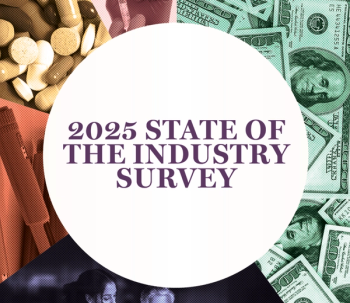
Healthcare systems require better clinical reference tools
Time to answer might seem like a small feature on a remote island of healthcare data systems, but it's a linchpin of software usability for daily patient encounters.
JonesAs reimbursements dwindle, operating margins tighten, and the cost of liability insurance skyrockets, healthcare delivery needs to be more efficient while simultaneously increasing the care quality that both patients and payers demand. Physicians see 15 to 20 patients daily. To keep up with this pace, digital clinical references must give physicians better information, faster than they do today.
Poorly designed clinical software slows work flow at the point of care. Worse yet, it reduces face time between the patient and physician and replaces it with screen time. It doesn’t have to be this way. Clinical-reference publishers can be part of the solution, expanding and constantly updating content while shrinking the time it takes to find the right information at the point of care.
Related:
“Time to answer,” in its most basic definition, refers to the number of clicks it takes to acquire the exact information a physician seeks. Traditional online medical references can require four to eight clicks to get to the right answer. Internet search engines typically get there in one click. That should be the goal for clinical references, too.
This is not as easy to achieve as it might sound. Challenges include rethinking rigid taxonomies to accommodate the way physicians work today, reorganizing search results to be more intuitive, and adapting interfaces to the various mobile devices physicians use at the point of care. Upgrades must happen continuously as devices and work flows change; there isn’t time to wait a few years between versions anymore.
Tapping into search-engine skills we all have
Taxonomy, the organization of topics, underpins clinical content. In digital clinical reference material, taxonomy must change with the times. It must also recognize that physicians do not always happen to use perfect clinical terminology. As a result, search results should recognize additional paths to topics via abbreviations, symptom descriptions and accidentally misspelled drug names.
In this way, the search path becomes wider and the process becomes faster. For example, a physician has an easier time finding a dosing calculator for an influenza medication while a miserable patient lies before him in the exam room. Or in a trauma unit, when a “GSW” patient in grave condition comes off the ambulance and there’s no time to spell out that "gunshot wound" on a smartphone touch-screen keyboard.
Interfaces for clinical references should embrace what the “Google gestalt.” Nobody taught us how to do an Internet search, except maybe Google itself in the way it adapted to our behaviors, over the years.
A decade ago, it wasn’t uncommon to have to click through a second or even third page of search results to get to the thing for which you were searching.
Now, nobody does that. If it’s not in the top half of the page, we just add a word to the string (i.e. add “deer” to “tick” when trying to see a picture of the ones that carry Lyme disease) and hit the “search” button.
Clinical references need to adapt to the gestalt of search, instead of forcing clinicians to bend to the peculiarities of one vendor’s taxonomy. The interface must recognize and adapt to the device in the clinician’s hand, the results customized and reflowed according to the screen size.
Financial impact
While healthcare administrators might wish technical concepts such as interfaces and search taxonomy stay relegated to the software developer’s domain, they can’t. Hospitals are investing in a lot of content and distributing it enterprise-wide. But what good is the content if it’s hard to use on the mobile devices clinicians are using at the point of care? Faster, more relevant electronic medical references and clinical decision support in the provider setting are what’s needed.
Improved time to answer can help reduce liability. Consider, for example, searching on symptoms presented by a sick patient who recently visited West Africa. Is it Ebola or something else? What can be ruled out? Despite deep training and experience, clinicians have memory gaps.
A fast, accurate clinical reference tool can fill those gaps and inform diagnoses, if it’s optimized for the physician's work flow. If it’s not, the right information could remain buried, unused. If the right information isn’t unearthed, it can result in scenarios ranging from unnecessary lab tests to medical errors.
Related:
Furthermore, for healthcare providers enrolled in the meaningful use incentive program, clinical references can help meet requirements for discharge patient education and clinical decision support.
So, while clinical-reference time to answer might seem like a small feature on a remote island of healthcare data systems, it isn’t. It’s a linchpin of software usability for daily patient encounters.
Done wrong, it can erode your bottom line. Done right, it will give physicians more patient face time, which they need, while improving care quality and operations.
Betsy Jones is vice president of medical product management and chief content officer,
Newsletter
Get the latest industry news, event updates, and more from Managed healthcare Executive.





















































